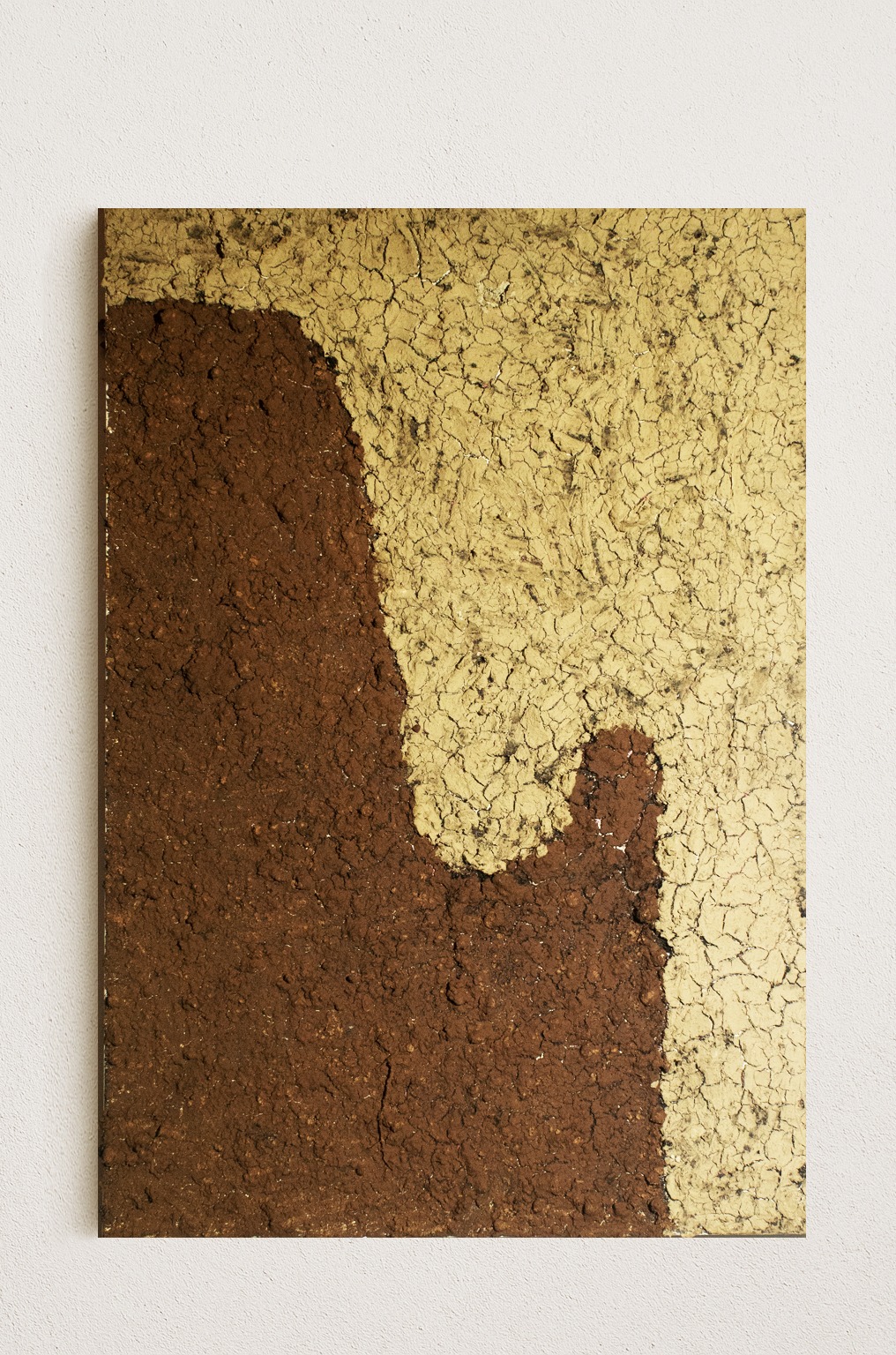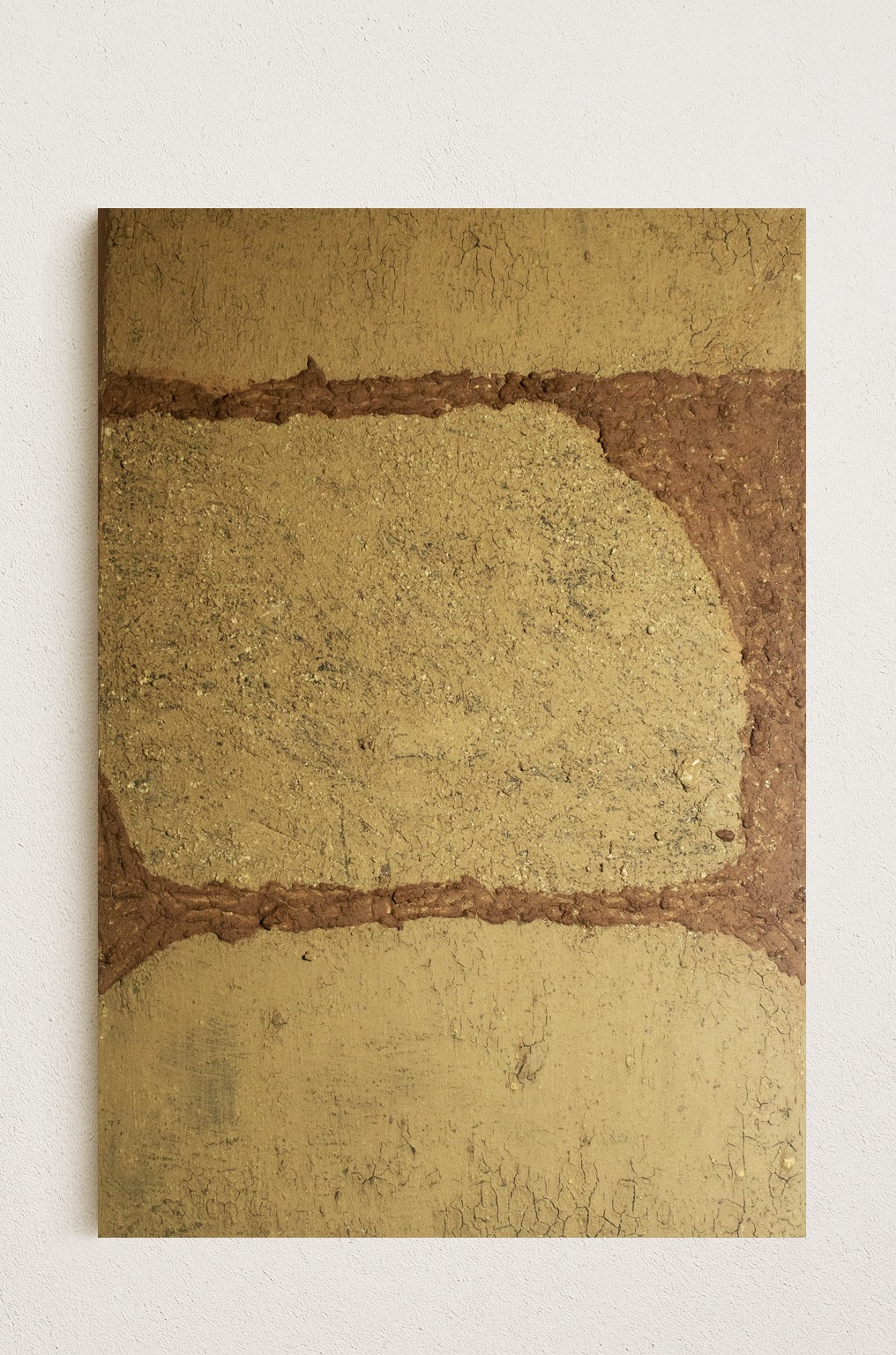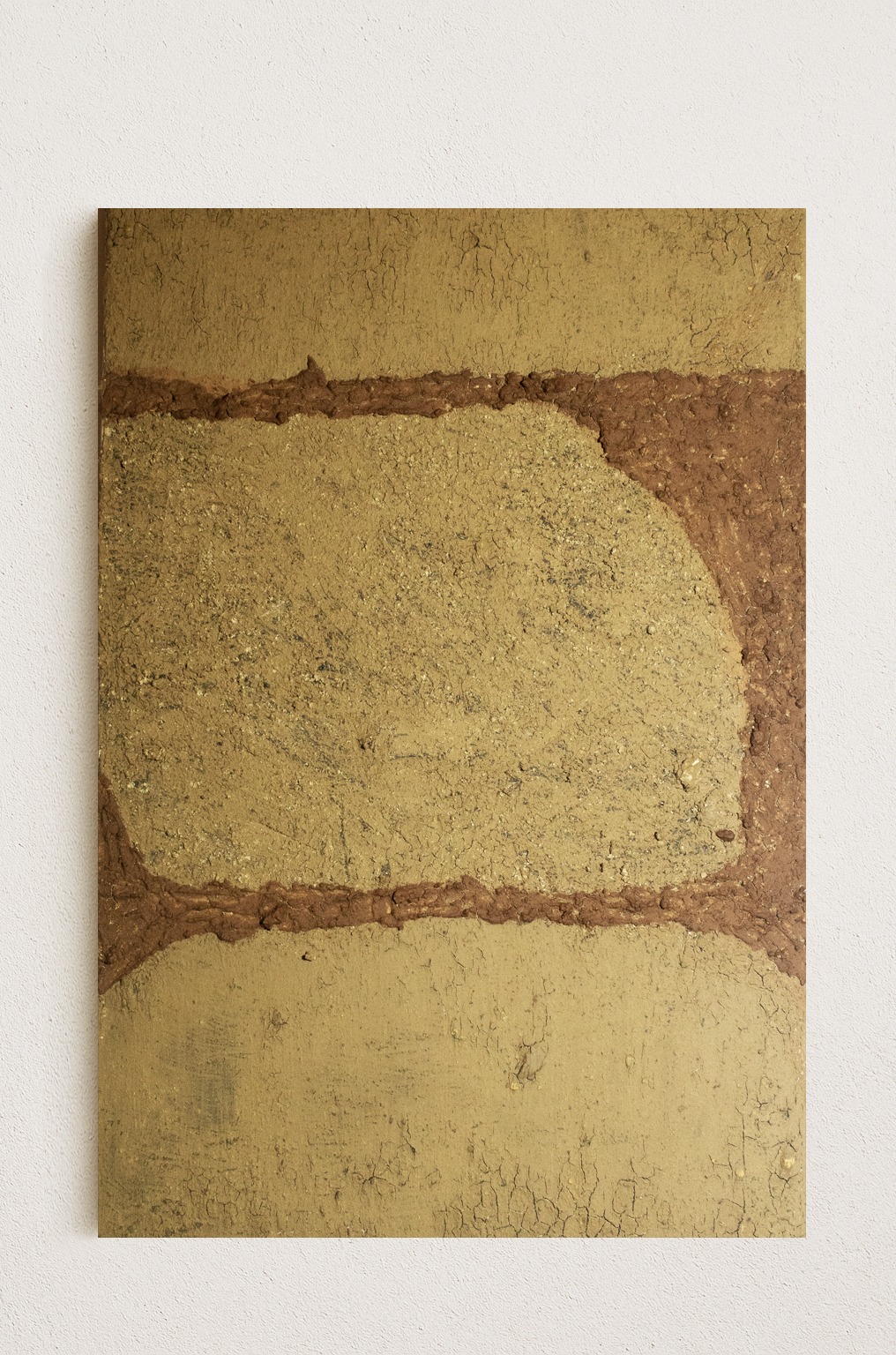Sara Melis - La trasfigurazione ontologica della sostanza.
di Francesca Callipari
Artista e designer, Sara Melis articola la sua pratica attraverso una coerenza materica che trova origine nel legame stretto e primigenio con l'ambiente naturale. Ne scaturisce una cifra stilistica di immediata e lucida riconoscibilità, in grado di trasformare i suoi lavori in ponti emotivi carichi di una risonanza comunicativa fertile e pregnante.

Nell'atto sublime di depurare il gesto da ogni residuo artificioso, elevando l'opera da simulacro illusorio a presenza assoluta, ella svela la via d'accesso all'archetipo, in una simbiosi quasi mistica con la terra. Quest'ultima, superata la sua funzione di inerte supporto, si trasfigura in sostanza ontologica, in corpo sensibile che custodisce, nelle sue fibre e nelle sue crepe, la memoria del mondo.
Storicamente, l'operato di Melis si radica, senza dubbio, in quel prestigioso contesto artistico italiano ed europeo che, a partire dalle ceneri del secondo dopoguerra, ripudia l'astrazione pura per convergere verso l'affermazione dell'essenza della sostanza. Proprio in virtù di questa eredità, l'artista cerca un contatto diretto con la verità del reale, mediante l'uso della materia grezza, ponendosi in continuità con le matrici dell'Informale Materico o, più specificamente, con la tensione etica e minimalista dell'Arte Povera. Risentiamo concettualmente nelle sue tele l'eco sommessa di maestri del Novecento, primo fra tutti Alberto Burri. L'estetica della ferita e della ricomposizione, con la materia usata come elemento vivo che si crepa e si trasforma, avvicina la «terra cruda su tela» di Melis alla potente poetica del trauma espressa nei Sacchi e nei Cretti burriani.
Tuttavia, pur muovendo dalle rigorose premesse del passato, l'artista non si limita alla mera citazione, operando, in realtà, un superamento tematico e una rilettura concettuale di tali principi. Rientrando in una visione pienamente contemporanea, ribadisce il rapporto inestricabile tra l'umano e la natura, una scelta che assume una valenza ancor più forte in un'era di urgenza ecologica e crisi climatica quale quella attuale. Parallelamente, la sua ricerca pone poi l'enfasi sul gesto ancestrale e di co-creazione con l'elemento tellurico (la terra che si auto-organizza), lanciando un invito risoluto a rallentare i processi e riscoprire il valore intrinseco e non mediato delle cose. Questa etica della sostanza si traduce in un linguaggio formale, governato da un'implacabile dialettica tra massa e assenza. Seppur la composizione rimanga rigorosamente frontale, la carnalità intrinseca del materiale conferisce una profondità tattile che bypassa l'illusione visiva.

Crepe ed erosioni si manifestano, pertanto, come "eventi reali", cronache viscerali del tempo incise sulla superficie sensibile; rappresentano il nucleo primario delle opere, rivelando uno spessore concettuale in grado di evocare tracce silenziose di impulsi arcaici. È come se l'artista ci mostrasse, attraverso gli strati di terra, le vestigia del tempo in cui l'uomo ha per la prima volta toccato e modellato la materia. Quasi come ideogrammi di una lingua dimenticata, i blocchi di impasto scuro si sovrappongono a quelli più chiari o viceversa, generando una poesia silenziosa che esige di essere compresa non solo con lo sguardo, ma con la memoria della pelle. Melis opera, in tal senso, la trasfigurazione del paesaggio grezzo e non mediato: non è l'uomo a imporre interamente la propria volontà, ma è la sostanza stessa che si svela, mutando il suo stato da substrato inerte a linguaggio, in un processo in cui la natura diventa forma e cultura.
L'impegno di questa artista si cristallizza, quindi, in una perseverante ricerca di armonia tra spazio, sostanza e significato.
Come un rito, la sua arte si offre allo spettatore, divenendo stimolo ad esperire un atto di volontà creativa nel confronto scabro con la fragilità e l'asprezza della cruda terra. È un gesto di profonda e rinnovata consapevolezza di sé, che culmina nello svelare un'ultima, essenziale verità: l'opera tace finché non si compie nella coscienza di essere parte del tutto, anello inestricabile tra l'umano e l'ambiente, quella radice aurorale alla quale il nostro essere resterà per sempre vincolato.
Francesca Callipari
Art critic and Art curator
EN
The ontological transfiguration of substance.
Artist and designer, Sara Melis articulates her practice through a material coherence rooted in a close and primordial connection to the natural environment. This results in an immediately and clearly recognizable stylistic signature, transforming her works into emotional bridges charged with a fertile and meaningful communicative resonance.

In the sublime act of purifying the gesture of all artificial residue, elevating the work from an illusory simulacrum to an absolute presence, she reveals the path to the archetype, in an almost mystical symbiosis with the earth. The latter, having surpassed its function as an inert support, is transfigured into an ontological substance, a sensitive body that preserves, in its fibres and its cracks, the memory of the world.
Historically, Melis's work is undoubtedly rooted in that prestigious Italian and European artistic context which, emerging from the ashes of the post-WWII era, rejected pure abstraction to converge towards the affirmation of the essence of substance. Precisely by virtue of this legacy, the artist seeks direct contact with the truth of the real through the use of raw matter, positioning herself in continuity with the foundations of Informale Materico (Matter-based Informal Art) or, more specifically, with the ethical and minimalist tension of Arte Povera. Conceptually, one can sense in her canvases the subdued echo of 20th-century masters, first and foremost Alberto Burri. The aesthetic of the wound and recomposition, with matter used as a living element that cracks and transforms, brings Melis's "raw earth on canvas" close to the powerful poetry of trauma expressed in Burri's Sacchi (Sacks) and Cretti (Cracks).

However, while starting from the rigorous premises of the past, the artist does not limit herself to mere citation, operating, in reality, a thematic transcending and a conceptual reinterpretation of these principles. Entering a fully contemporary vision, she reasserts the inextricable relationship between the human and nature—a choice that takes on an even stronger value in an era of ecological urgency and climate crisis like the present one. In parallel, her research places emphasis on the ancestral gesture and on co-creation with the telluric element (the self-organizing earth), issuing a resolute invitation to slow down processes and rediscover the intrinsic and unmediated value of things. This ethics of substance translates into a formal language governed by an unrelenting dialectic between mass and absence. Although the composition remains strictly frontal, the intrinsic carnality of the material grants a tactile depth that bypasses visual illusion.
Cracks and erosions, therefore, manifest as "real events," visceral chronicles of time etched onto the sensitive surface; they represent the primary nucleus of the works, revealing a conceptual depth capable of evoking silent traces of archaic impulses. It is as if the artist is showing us, through the layers of earth, the vestiges of the time when man first touched and shaped matter. Almost like ideograms of a forgotten language, blocks of dark paste overlap with lighter ones, or vice versa, generating a silent poetry that demands to be understood not only with the gaze but with the memory of the skin. Melis, in this sense, operates the transfiguration of the raw, unmediated landscape: it is not man who entirely imposes his will, but the substance itself that unveils itself, changing its state from an inert substratum to a language, in a process where nature becomes form and culture. The commitment of this artist thus crystallizes in a persistent search for harmony among space, substance, and meaning.
Like a ritual, her art offers itself to the viewer, becoming a stimulus to experience an act of creative will in the rough confrontation with the fragility and harshness of the raw earth. It is a gesture of deep and renewed self-awareness, culminating in the revelation of one final, essential truth: the work remains silent until it is fulfilled in the consciousness of being part of the whole, an inextricable link between the human and the environment—that primal, auroral root to which our being will forever be bound.
Francesca Callipari
Art critic and Art curator